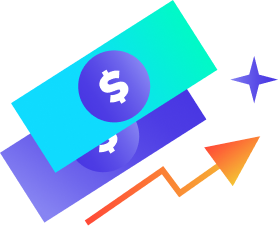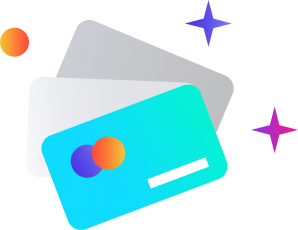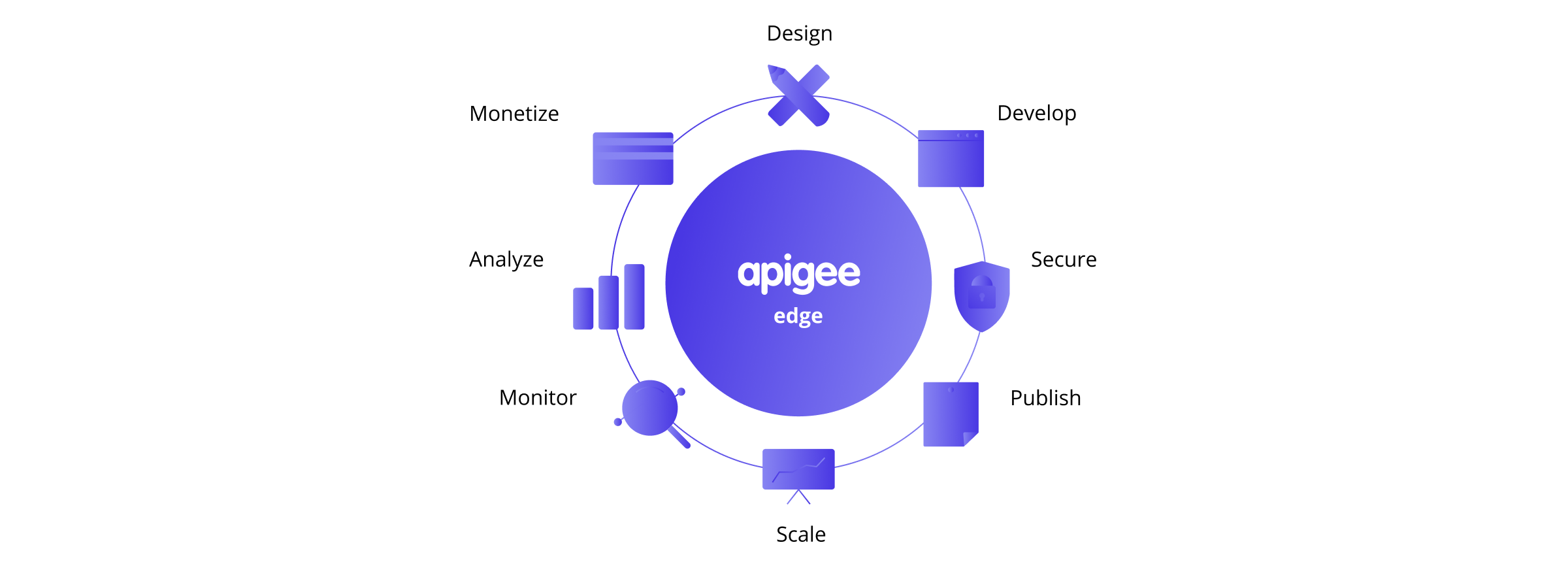15 Frequently Asked Questions About API Monetization

APIs are the foundation of modern digital business, with application developers using them to serve a specific segment of users’ needs. APIs skyrocketing popularity means companies now require API management tools to create, manage, secure, monetize, scale, and analyze.
Having extensive experience in this area, SoftServe’s dedicated Apigee practice identified the 15 most frequently asked questions about API monetization to help you get started.

1. WHAT IS AN API?
To understand APIs, you must first understand that all businesses have some form of digital assets. These assets can be expressed as software and are valuable for their unique elements, such as their functionality, data, or access to specific product inventories or user bases.
Making these assets available to both internal and external developers requires a mechanism to deliver them. This is the role of APIs or application programming interfaces. Developers use these APIs to then build and add value to software applications.
If you’re interested in learning more about APIs themselves, check out this quick video from Google:
2. WHAT IS API MONETIZATION?
API monetization is the way businesses can drive revenue from their APIs. There are many options and approaches to choose from, depending on the business’ market strategy. Examples can include charging for API usage, setting transaction fees, or driving indirect revenue.
However, there are several points to consider when deciding on API monetization. First, who are the potential users? Second, is there a demand for it? Or would it be better to do rapid partner onboarding? It’s also important to think of your potential competitors, your data rarity, and the value that you bring to the market.
3. WHY ARE APIs VALUABLE TO MY BUSINESS?
APIs are now everywhere, and the current era could be called “The age of the API economy and digital transformation.” Many companies have large amounts of digital assets available to them. APIs that encourage software developers to leverage these assets can be considered products by developers and business partners.
These products can not only provide income through the direct usage of APIs, but also widen business opportunities by obtaining new clients, developers, and partners. It can do all of this while creating consistent new revenue streams.
4. SHOULD ALL APIs BE MONETIZED?
When a business makes its APIs available to external developers, those APIs can drive direct and indirect value. Distinguishing between these is a prerequisite for determining if and how to monetize an API.
Today's companies can monetize a wide variety of digital assets. Specific services, such as banking transactions, are monetized by providing the bank and the customer with individual access to the information needed to make a transaction. Other ways include monetizing digital assets, which are focused primarily on expanding the customer base and obtaining new potential customers.
The most common forms are:
- Various authorization APIs
- Commercial bank APIs for financial transactions
- Different product APIs with the lists of product and services
- FX conversion APIs etc.
Almost every valuable digital asset can be monetized, except for those related to proprietary or sensitive processes. But it’s not just about monetization. Businesses must also have the right strategy for API implementation as a market product and a potential monetization object.
Meaning that API management requires a comprehensive and effective monetization strategy in order to fully utilize one of the existing monetization models.
5. WHAT ARE THE BENEFITS OF API MONETIZATION?
The most impactful benefits of API monetization include:
 |
 |
 |
| New revenue sources and scaled business efficiencies |
Improved value chain and enhanced business potential | New and unique feature implementations |
 |
 |
 |
|
Product simplification and improved experience
|
Cost center to revenue
|
Reaching new markets and millions of new customers while avoiding technical and cultural issues with a well-implemented AP integration approach |
As you can see, there is more than just potential revenue motivating businesses to open their APIs.
6. ARE THERE ANY RISKS IN API MONETIZATION?
There are a few potential risks to be aware of. The most prominent are security-related issues. Being the only point of entry, APIs can be a primary target for hackers. APIs are vulnerable to CSRF attacks, XSS attacks, man-in-the-middle attacks, DDoS, and other problems like SQL injections. Businesses must enhance their security strategy with any number of available options.
According to Imperva’s API Security Survey, the most common measures companies use to combat security issues include:
 who use runtime application self-protection |
 who use web application firewalls |
 who use API gateways |
 who use network firewalls |
76.4% of companies specifically state they treat API security differently than web security.
7. ARE THERE OTHER TECHNICAL ISSUES OR ADVANTAGES TO API MONETIZATION?
Simple APIs must integrate the latest innovations to keep up with demand. API providers should also keep in mind that API monetization requires release management and monitoring to quickly detect service disruptions and act accordingly.
Shaping your monetization strategy is often an iterative process, so you should review API analytics to observe how consumers are using it. The investment into tools that allow, for instance, the flexibility to modify pricing, is essential to remain competitive.
8. DO APIs IMPROVE CUSTOMER EXPERIENCES?
Making things more convenient for potential customers and users is the purpose behind using APIs as market products. Beyond just exposing your digital assets as services and integrating with potential partners, APIs can also improve your business intelligence.
With various value chain integrations, APIs empower companies to gather significant amounts of necessary data on customers’ interaction habits, products, and the services they prefer within a whole variety of modern channels and devices.
9. CAN APIs HELP TO REACH NEW MARKETS?
As mentioned above, the flexibility and simplicity of API integration allow for expanded access to applications. With that comes access to the digital assets of companies from an ever-growing number of countries. People from developing countries are increasingly using global payment systems and mobile services via available mobile devices.
Creating a specialized platform with localization and a high level of trust is both costly and time-consuming, but open APIs make it possible to reduce costs and accelerate development within any platform operating within the local markets. APIs also allow you to easily integrate with local partners and developers without language barriers—further expanding your services’ possibilities for comprehensive monetization.
10. WHAT ARE THE MAIN MODELS FOR API MONETIZATION?
Depending on internal business nuances, companies follow different API strategies to leverage their revenue and expand digital market opportunities.
With this in mind, the following monetization business models are often used simultaneously to increase benefits:

FREE:
A very popular approach that allows the user to register for free and start using the API, assessing how well it meets particular needs before paying for it

CONSUMER PAYS:
With a valuable asset comes the opportunity to set a price for API usage, though pricing and charges should stay flexible and be ready to change if needed

CONSUMER GETS PAID:
To incentivize API consumers and encourage high-quality integration and implementation of revenue-generating apps, companies can share current revenue from alternative API revenue streams

INDIRECT MONETIZATION:
Generates revenue via advertising by using developers and partners as third-party marketing agents to promote your brand and services and drive traffic to existing applications
11. WHAT DO API MANAGEMENT PLATFORMS DO?
Monetizing APIs requires specific tools, which is why API management platforms are needed. Leading software companies have already made the leap from selling separate products to selling a platform.
The reason is apparent: while separate software products generate only a single revenue stream, platforms—by combining users and services—drive multiple revenue streams. Platforms enable a multi-sided business model that can be a crucial driver of growth for software companies and clients.
An API management solution will usually include essential API tools and services, such as:
- An API gateway to secure the traffic
- A developer portal to allow app developers to test and purchase the APIs
- API lifecycle management tools to manage API dev and deployment
- Analytics and monitoring tools
- Convenient API monetization capabilities
Leading API Management platforms provide customers with the most extensive range of easily scalable and flexible capabilities within a complex and self-sufficient system based on different environment architectures.
12. WHAT ARE THE BEST API MANAGEMENT PLATFORMS?
The Forrester Wave™: API Management Solutions, Q3 2020, analyzed the leading vendors in the API management marketplace, assessing 15 API management solutions against a set of pre-defined criteria.
Google Cloud’s Apigee API management platform was named a leader in this field in addition to receiving the highest possible score in the market presence category. In the strategy category, Google Cloud was again named a leader for its product vision, planned enhancements, and current offerings such as: API user engagement, REST API documentation, formal lifecycle management, data validation and attack protection, API product management, analytics, and reporting.
A Gartner analysis also ranked Google Cloud’s Apigee API management first for providing the most comprehensive array of tools to cover all necessary API management directions while allowing customers to leverage their digital capabilities.

13. CAN I MONETIZE MY COMPANY'S API MYSELF?
You could try. It’s possible for someone to create and develop separate proxies as well as the whole transformation flow within the Apigee platform. However, without extensive use case experience and a deep understanding of systems, you’re likely to experience development failures.
These failures—along with negative customer feedback—will ultimately cost you time and money due to missed deadlines while also complicating existing development goals.
A proper architecture solution complex that oversees the entire API integration and management lifecycle is needed to ensure consistent business growth and API integration. SoftServe’s global team of certified specialists with extensive experience in Apigee provides clients with expertise and support throughout the API Development lifecycle and the best architecture solutions for each particular business need.
We’re well versed in overcoming API development challenges such as: testing, design, CI/CD, developer portals, monitoring, analytics systems, crafting cloud, hybrid, and on premises architecture approaches.
SoftServe builds efficient, flexible, and scalable solutions for enterprise, customized to meet unique business needs.
14. WHAT ARE SUCCESSFUL EXAMPLES OF API MONETIZATION?
Successful API monetization experiences increase daily, with examples ranging from Facebook, Instagram, and AccuWeather to TripAdvisor, SkyScanner, and Telstra. In each of these examples, other businesses were encouraged to enter the world of the “API Economy” and expand their horizons and capabilities.
Facebook and Instagram especially have made major strides in providing new APIs within their built-in services that integrate into various commercial and trading platforms. This has led the companies to offer transaction completion ability within the social networks themselves.
For example, Facebook launched the “Shops” service, which is a new way for businesses to open stores on Facebook and Instagram for free—even without a website. Shopify, BigCommerce, and Woo all manage the sales logistics, and users who like the brand's page can now simply click on the "View Shop" button, then select and buy a product without ever leaving the social network interface.
Even large businesses will be able to sell here successfully since companies can divide products into categories, with no limit to the number of SKUs allowed.
One of the best examples of successful API integration and monetization with Google Cloud’s Apigee platform is AccuWeather.
A SoftServe API monetization success story is with our client, Keller Williams. Utilizing Apigee & API-based projects, we enabled this real estate tech giant to drive new revenue streams.
15. WHERE DO YOU BEGIN YOUR API MONETIZATION JOURNEY?
By reaching out to SoftServe to leverage our extensive expertise to strategize and implement your unique API monetization path. From identifying your most desirable business capabilities or data, to deciding how to market, service, and improve your product—SoftServe is ready and more than able to help. Let’s talk about your API monetization journey today.

